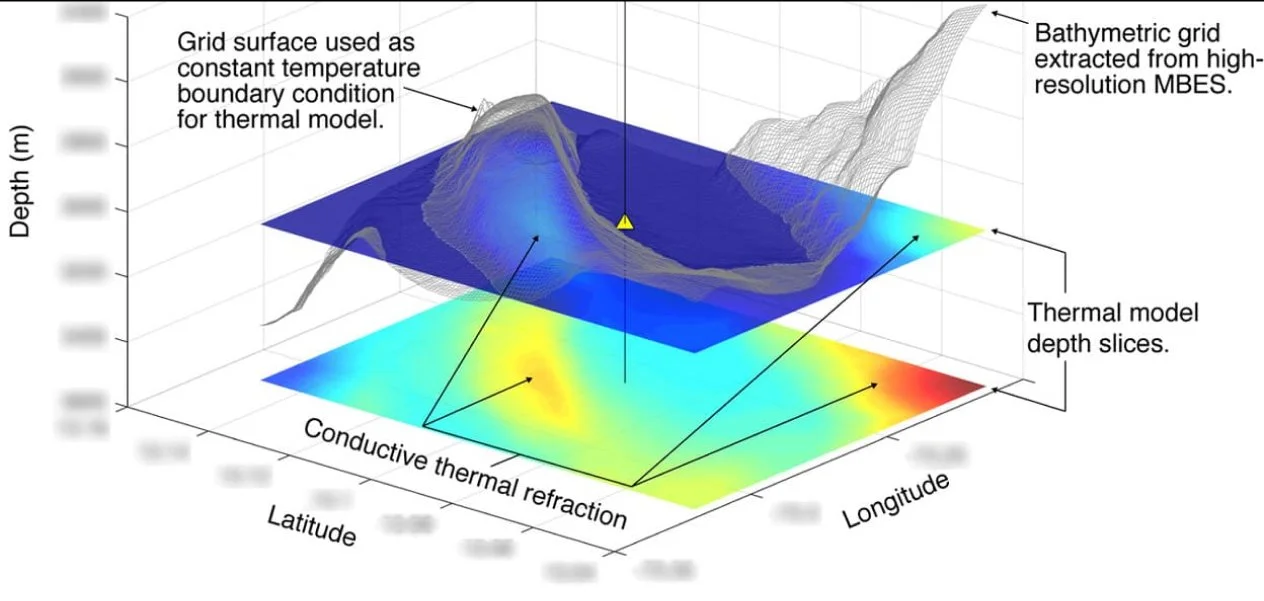Seafloor Heat Flow versus Temperatures at Depth
One question often asked by clients is “How do seafloor heat flow measurements made within the upper few meters of the sediment column translate into temperatures at much greater depths?”
To answer this question, we first need to understand a little bit about what seafloor heat flow actually is. For a more detailed discussion on the mathematics of calculating heat flow, see “What is heat flow?”. The heat flow probe (up to 6.1 meters in length) determines two things when it is inserted into the seabed:
Precise temperatures (0.001 degrees Celsius resolution) at multiple sub-surface depths along the length of the sensor, and;
Sediment thermal conductivity at the same depths as the temperature measurements.
Measured sub-surface temperatures are used to calculate the shallow thermal gradient, and heat flowing vertically through the measurement interval is calculated using the thermal gradient and sediment thermal conductivity.
So, how to we translate this into temperatures below the measured interval? There are numerous ways to approach this, and here we list three methods in order of increasing accuracy:
If there are no other available data on subsurface properties, one can simply extend the shallow gradient to depth. For example, if the measured shallow gradient is 0.030 degrees Celsius per meter, then the temperature 1,000 meters below the seafloor would be 30 degrees.
This is an “end member” estimate, because it assumes that the sediments below the interval measured by the heat flow probe have the same thermal conductivity as those near the seafloor (i.e, it ignores bulk thermal conductivity increases due to sediment compaction and dewatering).
If seismic data are available and have been interpreted to correspond with known lithologies, then data from global compilations of sediment thermal conductivity for these lithologies can be used to generate a synthetic thermal resistance versus depth profile. The shallow thermal gradient measured by the heat flow probe can now be boot-strapped down the synthetic profile in order to provide a more accurate calculation of temperatures at depth.
If nearby drilling data are available (with thermal conductivity measurements made on recovered sections of core), then a very detailed thermal resistance versus depth profile can be created. Boot-strapping the near surface thermal gradient along the detailed profile will result in the most accurate calculation of temperatures at depth.



